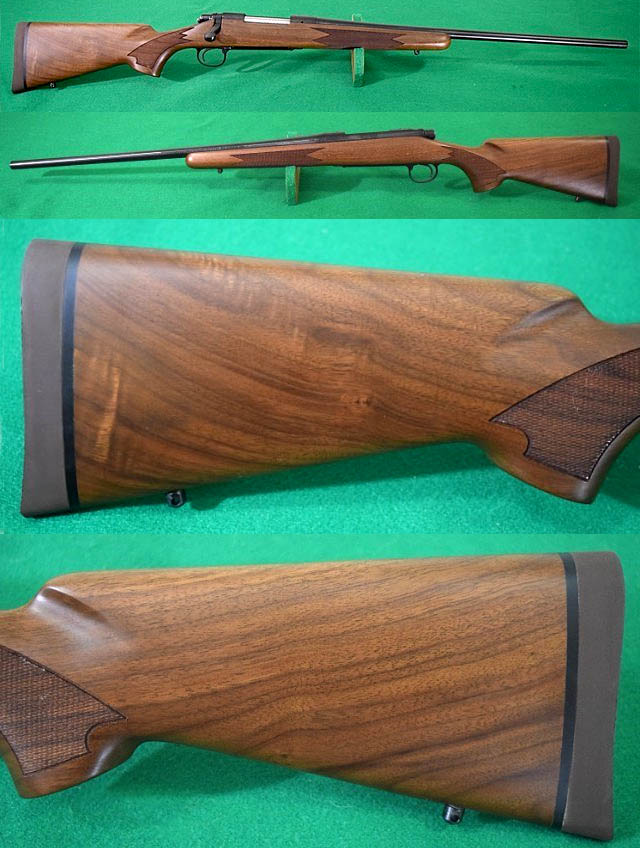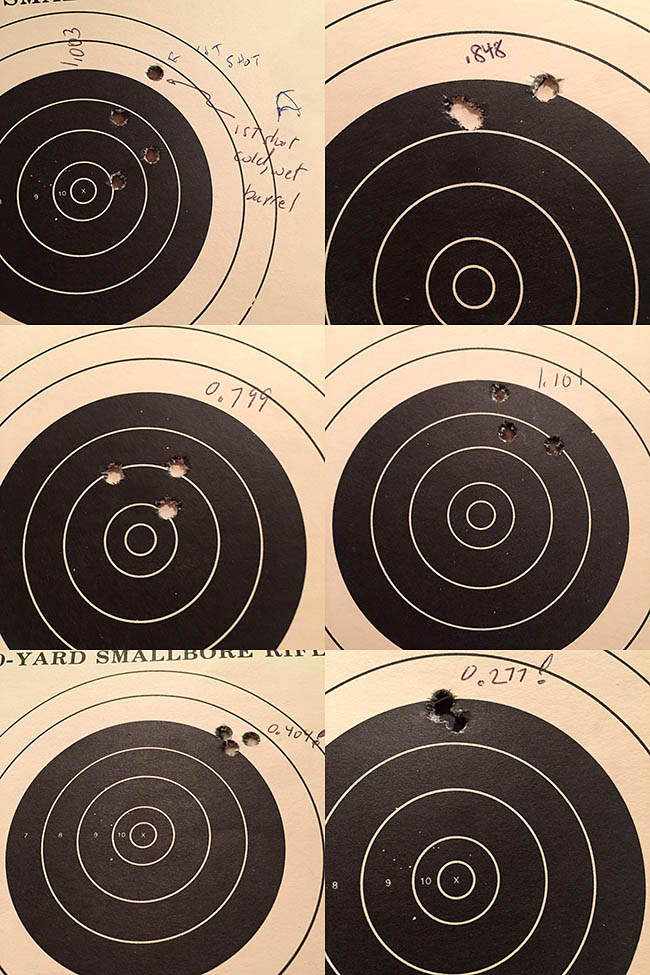
A short while ago I wrote about my Dad’s left hand 7mm Weatherby Mk V, and how Roy Weatherby personally helped me select it. Well, here’s a story about another rifle chambered for the powerful 7mm Weatherby Magnum cartridge.
About a year ago, I saw something unusual on Gunbroker.com. It was an ad for a Remington 700 Classic rifle chambered in the venerable 7mm Weatherby Magnum cartridge. This rifle is quite a setup and, I think, quite a score for me personally. I’ve been a huge fan of Weatherby rifles ever since I was a little boy, when my father chased woodchucks in New Jersey with a .243 Winchester Model 70. Back in the day, woodchucks were about the only thing you could hunt with a rifle in New Jersey. I grew up in a farming community (there’s a reason New Jersey is called the Garden State), and the farmers in our area gave my Dad free rein to cull the chuck population. Those little woodchucks did a lot of crop damage, and the farmers were grateful that my Dad was able send those critters on to their reward. As a little kid tagging along with Dad, it was grand fun. It was not at all unusual for him to take (and make) 400-yard shots, with his rifle resting across the hood of his ’65 F-100 Ford (there were a lot of powder burns on that old pickup truck). Like I said, it was awesome.
Just before I went to Korea, my Dad bought a 7mm Weatherby rifle for me as a going-away gift, and I loved it. I shot the barrel out of that rifle (yep, I shot it so much I wore it out) and then I had it redone with a Douglas barrel in 300 H&H. But the 7mm Weatherby Mag cartridge had its hooks into me, and they never let go. The idea is that a 7mm projectile is aerodynamically more efficient than a .30 caliber bullet (the 7mm is 0.284 inches in diameter; a .30 caliber bullet is 0.308 inches in diameter). For the same weight, the 7mm cartridge has a lower drag coefficient, so it retains more velocity downrange and it has a flatter trajectory.
All of the above is probably more theoretical than real world, but I still like the idea of a streamlined, hard-hitting, flat-shooting, hot 7mm. And that’s what the 7mm Weatherby cartridge is. It was one of Roy Weatherby’s first magnum chamberings, and it has been the fastest 7mm cartridge ever for many decades.

I’ve also always been a fan of the Remington 700 rifle. They are inherently accurate, and when I used to shoot high power metallic silhouette competition back in the ’70s and ’80s, it was rare to see anything other than a Model 700 in the winners’ circle. I’ve owned a few of these rifles, and they are indeed extremely accurate.
Remington had a run of Model 700 rifles they labeled the “Classic” for a little more than 20 years, with the idea being that each year they would do a rifle in one chambering only. Remington stopped making the Classic series more than 20 years ago, and I always wanted one.
Recently, I saw an ad on Gunbroker for one of the rarest of the Classic series, the single year they chambered these fine rifles in 7mm Weatherby Magnum. That was a “must have” rifle for me. A Model 700, chambered in 7mm Weatherby. Wow. The rifle was advertised as new in the box, the cartridge is an awesome one, and unlike most of the Classics I had previously seen, it had killer wood. Hey, what’s not to like? I bought the rifle from Heritage Shooting Academy in Triangle, Virginia, and it was a great deal. If anything, the rifle was better than advertised, and I sure couldn’t argue with the way it shot (more on that in a second).
When it arrived, I was more than impressed. It was indeed new in the box, it was flawless, the walnut was understatedly elegant, and as I was to learn, it shot very, very well. The only thing that initially concerned me was that these uber-velocity cartridges generally give up accuracy for what they gain in speed. But that sure isn’t the case with this rifle. I reloaded different cartridges trying various powder charges using two different bullets, and the groups that resulted (all at 100 yards) were fabulous.

My initial testing showed that the trick here was to load toward the higher end of the powder charge spectrum to more fully fill those big belted magnum cases. The theory is that doing so results in a more uniform pressure wave/flame front when the go-juice lights up, and I guess it worked that way for me. More powder results in more velocity and that meant more recoil, but wowee, the Model 700 provided great results! It shot phenomenally tight groups and the little bit of dispersion you see is undoubtedly more me than the rifle or the ammo. I am one happy camper!
Keep us going! Here’s why you should click on those popup ads!
Never miss an ExNotes blog:



Joe, I have a vague recollection of some reloaders putting some kind of stuffing in the case to keep the powder back toward the primer. Do you know anything about that?
Yep, and I’ve done that, Marty. I don’t so it any more. It was only ever intended for reduced velocity loads. There’s a concern that doing so could “ring” a chamber when the pressure front concentrates where the batting begins. Modern powders formulated specifically for reduced velocities make it unnecessary because they better fill the case. In any event, for full power loads, the case is nearly full so the batting (or stuffing) is unnecessary. The added fillers were only intended for instances where the propellant only took up a small percentage of the case volume, which is not the case when loading full power loads.